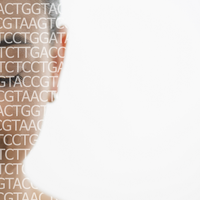deep learning

Nobel Prize in Chemistry for Work on Proteins
Sneha Khedkar | Oct 9, 2024 | 3 min read
David Baker, Demis Hassabis, and John Jumper share this year’s Chemistry award for their research on protein design and structure prediction.

Transforming Biopharma Research Through Artificial Intelligence
Sartorius | Oct 9, 2024 | 1 min read
Learn how researchers take their drug discovery and development research to the next level with artificial intelligence.

Explainable AI for Rational Antibiotic Discovery
The Scientist | Apr 24, 2024 | 1 min read
Researchers tackle the antibiotic resistance crisis with explainable neural networks and high throughput drug discovery.

Artificial Neural Networks: Learning by Doing
Shelby Bradford, PhD | Mar 1, 2024 | 8 min read
Designed to mimic the brain itself, artificial neural networks use mathematical equations to identify and predict patterns in datasets and images.

Predicting the Next Level of CRISPR Control
Deanna MacNeil, PhD | Aug 28, 2023 | 3 min read
Scientists combine the power of genome-wide screens and machine learning to unlock the secrets of transcriptome engineering with Cas13.

The Scientist’s Journal Club: Immunology
The Scientist | May 2, 2023 | 1 min read
Scientists present the latest research on the immune response against SARS-CoV-2, the influence of COVID-19 on future vaccine responses, and drivers of T cell development.

Benign or Cancerous? Differentiating Mutation Types with Machine Learning
The Scientist | Apr 27, 2023 | 2 min read
Scientists turn to machine learning and big data approaches for precision -omics in cancer research.

2023 Breakthrough Prizes Showcase Research in AI and Narcolepsy
Amanda Heidt | Sep 22, 2022 | 2 min read
Three prizes were awarded to six researchers working across the life sciences on cellular organization, protein structure, and the genetic underpinnings of a chronic sleep disorder.

Historic Adaptations May Now Make Us Susceptible to Disease
Dan Robitzski | Sep 16, 2022 | 5 min read
Researchers made the find using an algorithm that purportedly distinguishes between mutations that were selected for and those that came along for the ride by coincidence, a feat that has long eluded scientists.

Accelerating Discovery in the Age of a Pandemic
The Scientist | Jan 22, 2021 | 2 min read
An expert panel will present how synthetic biology accelerates the development of diagnostics, therapeutics, and the medicinal pipeline.

Image of the Day: DISCO Tissue Clearing
Emily Makowski | Oct 22, 2019 | 1 min read
New methods of visualizing tissue are presented at the Society for Neuroscience meeting.

AI Uses Images and Omics to Decode Cancer
Amber Dance | May 1, 2019 | 10 min read
Machine learning can analyze photographs of cancer, tumor pathology slides, and genomes. Now, scientists are poised to integrate that information into cancer uber-models.

Deep Learning Algorithms Identify Structures in Living Cells
Diana Kwon | May 1, 2019 | 4 min read
Researchers are using artificial intelligence to pick out the features of brightfield microscopy images.

A Primer: Artificial Intelligence Versus Neural Networks
Jef Akst | May 1, 2019 | 2 min read
A brief history of AI, machine learning, artificial neural networks, and deep learning.

AI App Identifies Rare Genetic Disorders from Photos of Patients’ Faces
Catherine Offord | Jan 8, 2019 | 2 min read
Deep-learning algorithms could help doctors narrow in on the causes of certain medical conditions, say researchers.

AI Networks Generate Super-Resolution from Basic Microscopy
Jef Akst | Dec 17, 2018 | 3 min read
A new study uses deep learning to improve the resolution of biological images, but elicits skepticism about its ability to enhance snapshots of sample types that it has never seen before.

Image of the Day: Bad Behavior
Kerry Grens | Dec 12, 2018 | 1 min read
A deep learning program can identify cells with higher metastatic potential based on the way they look and move.

AI Object Recognition System Operates at Speed of Light
Anna Azvolinsky | Jul 26, 2018 | 3 min read
Researchers have created a 3D-printed artificial neural network that uses light photons to rapidly process information.

Deep Learning Allows for Cell Analysis Without Labeling
Kerry Grens | Apr 12, 2018 | 2 min read
A new microscopy program requires no fluorescent markers to identify cell type, nuclei, and other characteristics.
